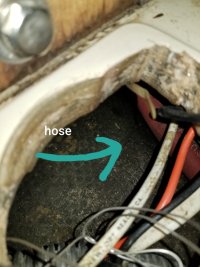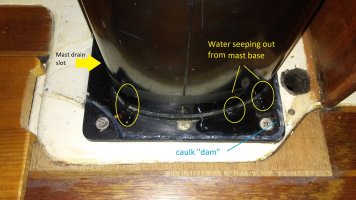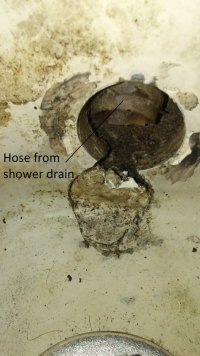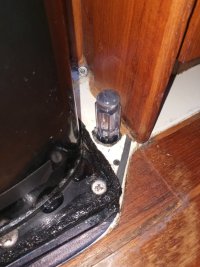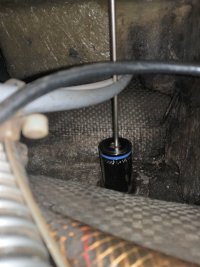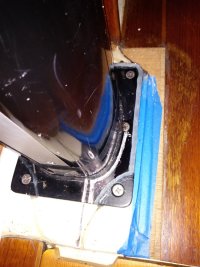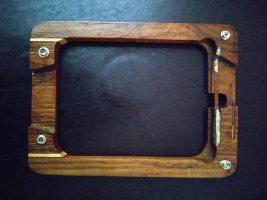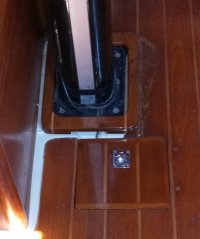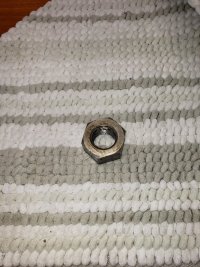windblown
Member III
I've been trying to trace a mystery source of water, eliminating some along the way. This season, a patch of sole between the mast and the head door went from dark stain and varnish lifting to all-out wet rot (just opened it up using hand drill and a mini hacksaw). I expected to find water trapped in the TAFG compartment. The wood was soaked, but no standing water. To my surprise, there is a limber hole. So water could come and go there and must have gotten trapped this season?
I don't think this is rain water from the mast. I may have water coming in between keel and hull. I may need to re-pack the rudder, and I may have a Dorade leak.
However, today, when I looked into the access hole that is under the salon settee on the port side next to the mast, I discovered a hose I never noticed before. It is hard red rubber, like my old bilge pump hoses. It seems to terminate right there, but where does it come from? Could this be draining water from farther astern? Any ideas, o wise ones?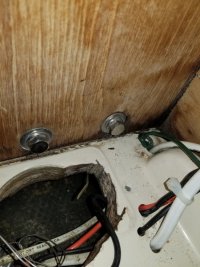 View attachment 44756View attachment 44756
View attachment 44756View attachment 44756
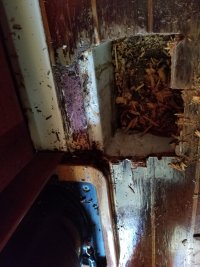

I don't think this is rain water from the mast. I may have water coming in between keel and hull. I may need to re-pack the rudder, and I may have a Dorade leak.
However, today, when I looked into the access hole that is under the salon settee on the port side next to the mast, I discovered a hose I never noticed before. It is hard red rubber, like my old bilge pump hoses. It seems to terminate right there, but where does it come from? Could this be draining water from farther astern? Any ideas, o wise ones?
 View attachment 44756View attachment 44756
View attachment 44756View attachment 44756


